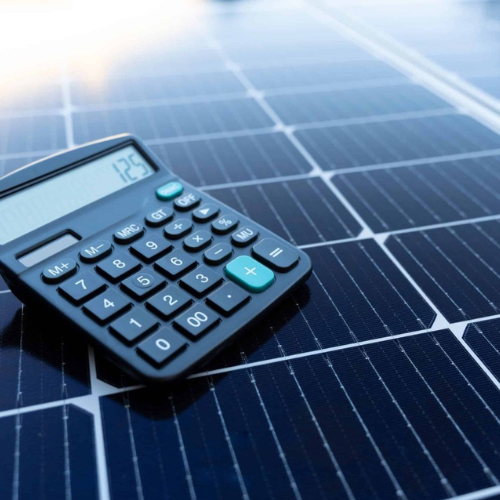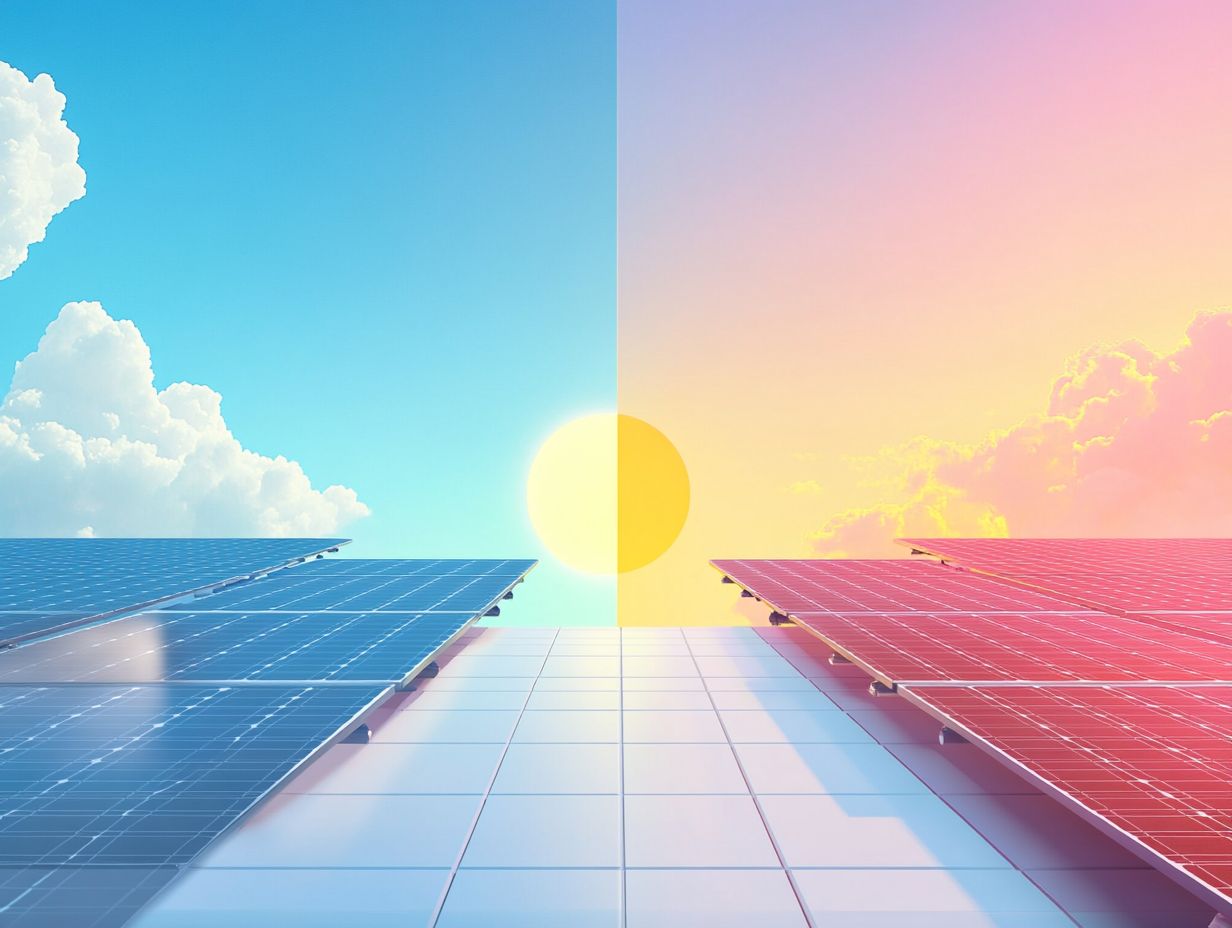Contents
- 1 Understanding Solar Panels: An Overview
- 1.1 What are Solar Panels?
- 1.2 Types of Solar Panel Technology
- 1.3 Essential Components of a Solar Panel System
- 1.4 Factors to Consider When Choosing Solar Panel Equipment
- 1.5 Installation and Maintenance of Solar Panels
- 1.6 Future Developments in Solar Panel Technology
- 1.7 FAQs About Solar Panel Technology
- 1.7.1 What is the basic technology behind solar panel equipment?
- 1.7.2 What are the components of a solar panel system?
- 1.7.3 How does solar panel equipment benefit the environment?
- 1.7.4 What is the lifespan of solar panel equipment?
- 1.7.5 How does understanding solar panel equipment help in making an informed decision?
- 1.7.6 What are the different types of solar panel technology?
Understanding Solar Panels: An Overview
As you navigate the shift towards sustainable energy solutions, solar panels are becoming a key player in this transformation.
This guide will walk you through the essentials of solar panel technology, diving into the different types—monocrystalline, polycrystalline, and thin film—that suit various needs. You’ll learn about the crucial components of a solar panel system, like inverters and batteries, and what factors you should weigh when choosing your equipment.
You’ll also find practical tips on installation and maintenance to help keep your system running smoothly over time. Plus, we’ll take a peek at the exciting developments on the horizon for solar technology.
What are Solar Panels?
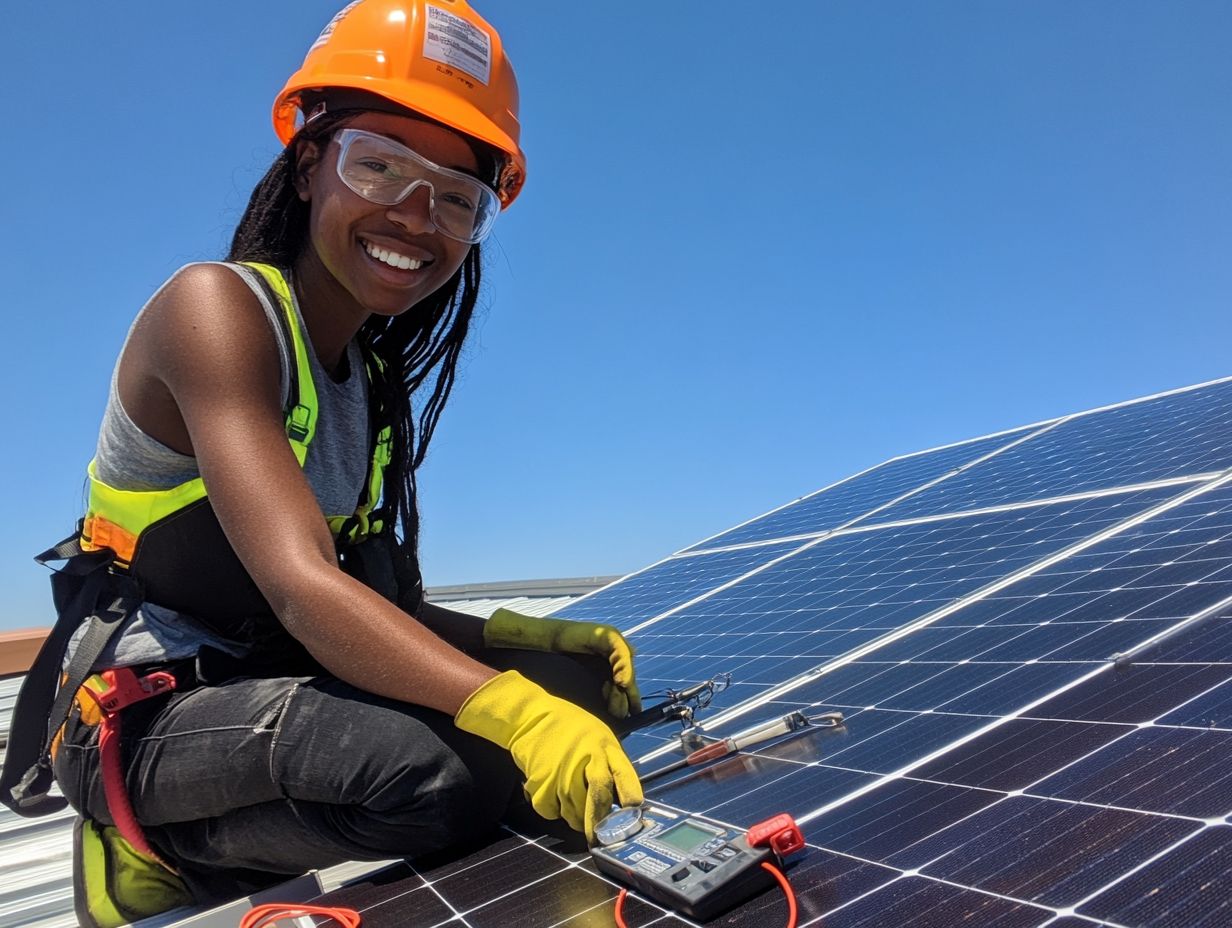
Solar panels are a key part of solar energy systems, and they work by harnessing sunlight to generate electricity using photovoltaic cells. These devices take in sunlight and turn it into usable energy, playing a big role in reaching renewable energy goals and helping to cut down on carbon footprints.
As more homeowners and businesses become aware of the environmental impact of traditional energy sources, solar technology is really taking off in communities like yours, offering a pathway to energy independence and sustainability.
Luque, A., & Hegedus, S. (2011). Handbook of photovoltaic science and engineering. John Wiley & Sons. Link
Types of Solar Panel Technology
When you’re looking into solar panel technology, it’s really important to get to know the different types out there: monocrystalline, polycrystalline, and thin-film panels.
Each of these photovoltaic technologies comes with its own perks and drawbacks, which can affect their efficiency, cost, and how they work in residential or commercial solar setups.
As you dive into the solar tech world, understanding these differences will help you make smart choices for your solar installation.
Comparison of Monocrystalline, Polycrystalline, and Thin Film Technologies
Monocrystalline panels are all the rage for their high efficiency and sleek design, while polycrystalline panels are often easier on the wallet but pack slightly less of a punch in terms of efficiency. Then you have thin-film panels, which are super flexible and lightweight—perfect for those unique installations you’ve been eyeing.
Figuring out these differences is key when you’re deciding which solar technology fits your energy needs and budget best.
Regarding performance, monocrystalline panels typically have a higher energy conversion rate than polycrystalline ones, often surpassing 20%. That means you can generate more power in smaller spaces.
On the flip side, while polycrystalline panels might not be as efficient, their lower production costs make them attractive for larger setups where keeping costs down is a big deal.
Thin-film technology is great for its versatility and is especially handy when you need something lightweight, like for rooftops or curved surfaces. Don’t forget about lifespan, either—monocrystalline panels generally last longer, which can really boost your overall cost-effectiveness with better performance over time.
As market trends change, understanding the pros and cons of each type will help you make smarter choices for both residential and commercial solar energy projects.
Essential Components of a Solar Panel System
A solar power system includes several essential components that work together to make the most of energy generation and usage.
You’ve got your solar panels, which transform sunlight into electricity.
Then come the solar inverters, turning that electricity into a usable form for your home.
And let’s not forget the battery storage systems that make sure you have energy on hand when the sun isn’t shining.
Understanding how these pieces fit together is crucial for maximizing the efficiency of your solar setup.
Key Components: Solar Panels, Inverters, and Batteries
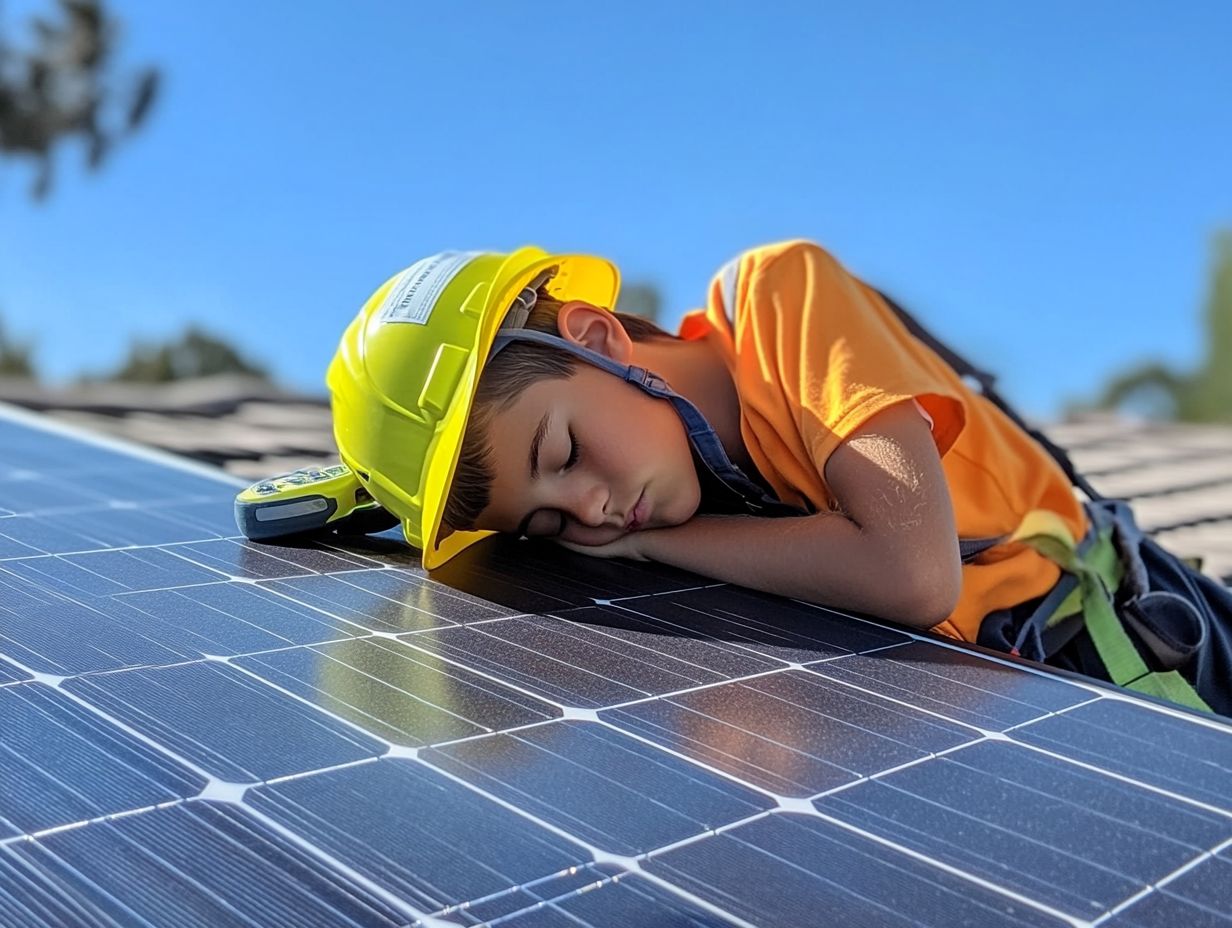
Solar panels generate electricity from sunlight, while solar inverters convert that electricity to the right voltage for your home. Battery storage systems let you use energy even when the sun isn’t shining, like on cloudy days or at night.
Together, these components create the backbone of any solar energy system, helping you effectively convert and store solar power.
Each of these elements is crucial for optimizing your energy use and maximizing your savings. When you’re considering a solar installation, take the time to evaluate different types of inverters—like string inverters, microinverters, and power optimizers. Each one comes with its own perks in terms of efficiency and system monitoring.
Choosing the right battery storage option is also key, with choices ranging from lithium-ion to lead-acid batteries tailored to your energy requirements and financial plan.
Beyond the technical stuff, don’t overlook the financial side of things. Exploring solar financing options and net metering agreements can really boost the value of your solar investment, helping you offset energy costs while doing your part for a sustainable future.
Factors to Consider When Choosing Solar Panel Equipment
When you’re picking out solar panel equipment, there are a few key factors you should keep in mind, like energy efficiency, durability, and installation costs.
By evaluating these aspects, you’ll not only find the best technology to meet your energy needs but also figure out how to maximize your solar power generation and minimize your carbon footprint.
With solar energy trends changing so quickly, making informed choices is more important than ever.
Key Factors: Efficiency, Durability, and Cost
Efficiency is a key factor when you’re choosing solar panels since it directly impacts how much energy you can produce. But don’t forget that durability and installation costs also play major roles in the overall value of your solar power system.
Striking a balance between these elements will help ensure that your investment in solar technology pays off over time, boosting your energy independence and reducing your environmental footprint.
When you’re evaluating the efficiency of solar panels, make sure to look at the panel’s rating and how it performs in real-world conditions, because those results can often differ from what you see in the lab. Durability is just as important; panels made from high-quality materials can handle tough weather and maintain long-term productivity, often backed by solid warranties to protect your investment.
Don’t overlook financing options and incentives, which can significantly cut down your installation costs and make solar energy more accessible for you.
Plus, implementing regular maintenance practices, like keeping your panels clean and monitoring their performance, can enhance the lifespan and efficiency of your solar system, leading you toward a more sustainable energy solution.
Installation and Maintenance of Solar Panels
Proper installation and maintenance of your solar panels are key to getting the most out of them in terms of performance, longevity, and efficiency.
By following best practices during installation, like doing a shading analysis and making sure they get optimal sunlight exposure, you can really boost your solar energy conversion and power output.
Plus, regular maintenance checks are essential. They help you spot and fix any potential issues, ensuring your solar power system runs smoothly.
Best Practices and Tips for Longevity
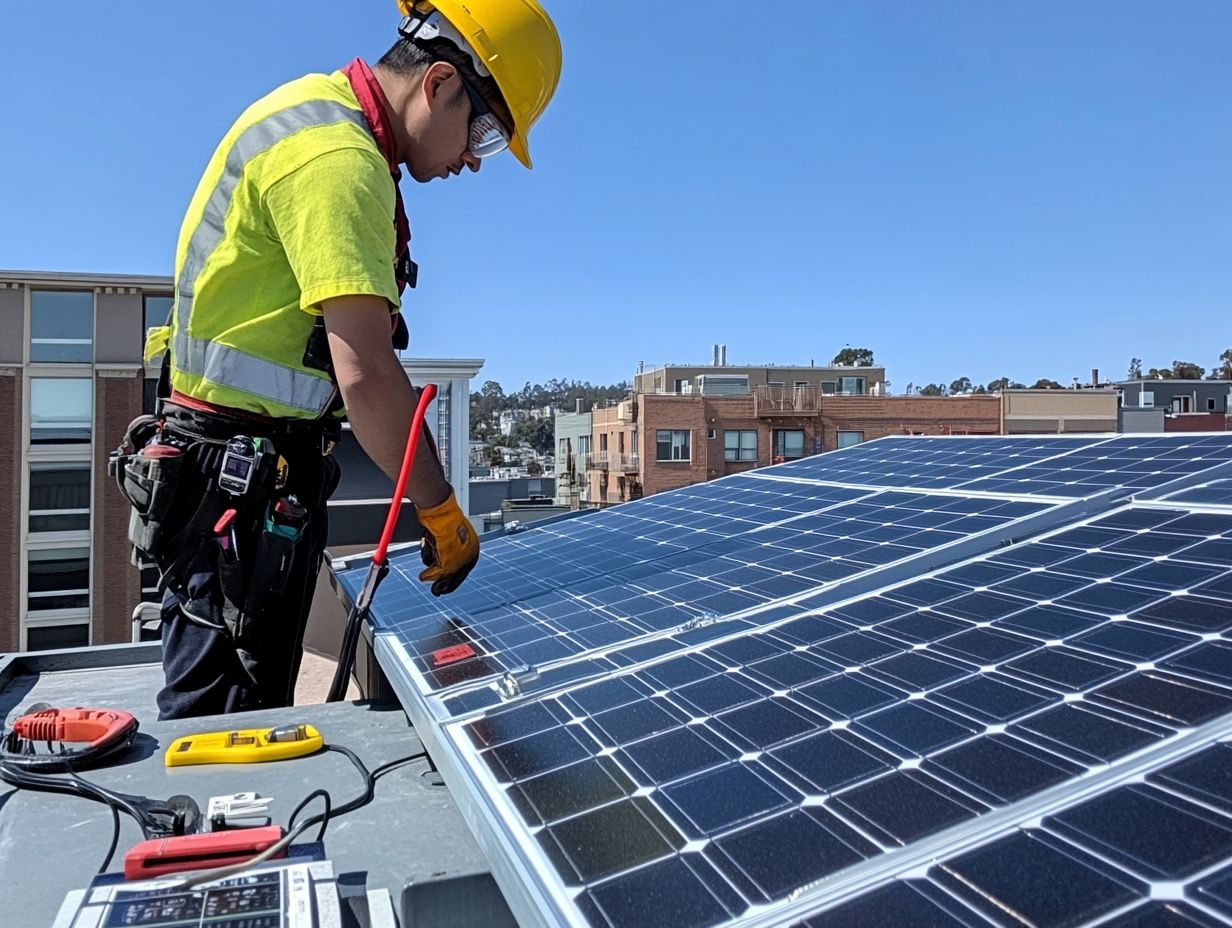
To make sure your solar panels stand the test of time, it’s key to follow some best practices and maintenance tips that keep them running efficiently. Regular cleaning, performance monitoring, and timely inspections can really help extend the lifespan of your solar power systems. This means better energy production and lower maintenance costs for you.
By consistently checking the electrical output, you can catch any potential issues early on, ensuring that your system is always operating at its best. Watch your solar panels for any signs of wear, like cracks or discoloration, which could mean they’re not performing as well as they should.
Using the right cleaning techniques is especially important if you live in a dusty area or somewhere with lots of pollen. This ensures you’re getting the most energy conversion possible. Comprehending solar energy storage is essential; it not only reduces reliance on the grid but also enhances your sustainability initiatives.
By taking these proactive steps, you’re not just enhancing the effectiveness of your solar energy system, but you’re also doing your part for a healthier environment.
Skoplaki, E., & Palyvos, J. A. (2009). On the temperature dependence of photovoltaic module electrical performance: A review of efficiency/power correlations. Solar Energy, 83(5), 614-624. Link
Future Developments in Solar Panel Technology
The future of solar panel technology is super exciting for you, with rapid advancements in clean energy technologies, innovative materials, and better efficiency ratings just around the corner.
Ongoing research and development in the solar industry are setting the stage for breakthroughs that can boost solar energy conversion and make solar power systems more accessible for both residential and commercial users like you.
As you embrace these innovations, the potential for a sustainable energy future becomes more and more within reach.
Emerging Trends in Solar Panel Technology
Recent advancements in solar power innovations, like higher efficiency solar cells and integrated solar systems, could completely change how you harness and use solar energy.
These developments have the potential to significantly reduce overall solar installation costs and improve the overall performance of solar energy applications, helping you achieve energy independence and shrink your carbon footprint.
One particularly exciting advancement is solar tracking systems. These clever setups follow the sun throughout the day to maximize energy capture, dramatically boosting output.
Plus, new materials like perovskite solar cells and photovoltaic cells are pushing the boundaries of energy efficiency and reducing the need for traditional silicon panels in solar power systems.
As these cutting-edge solar technology advancements gain traction, you might find that they speed up widespread adoption, especially in community solar projects and utility-scale solar applications.
With increasing renewable energy incentives from governments aimed at promoting net-zero homes, the future of solar power generation looks brighter than ever, paving the way for a sustainable and self-sufficient energy landscape with reduced carbon footprint.
FAQs About Solar Panel Technology
What is the basic technology behind solar panel equipment?
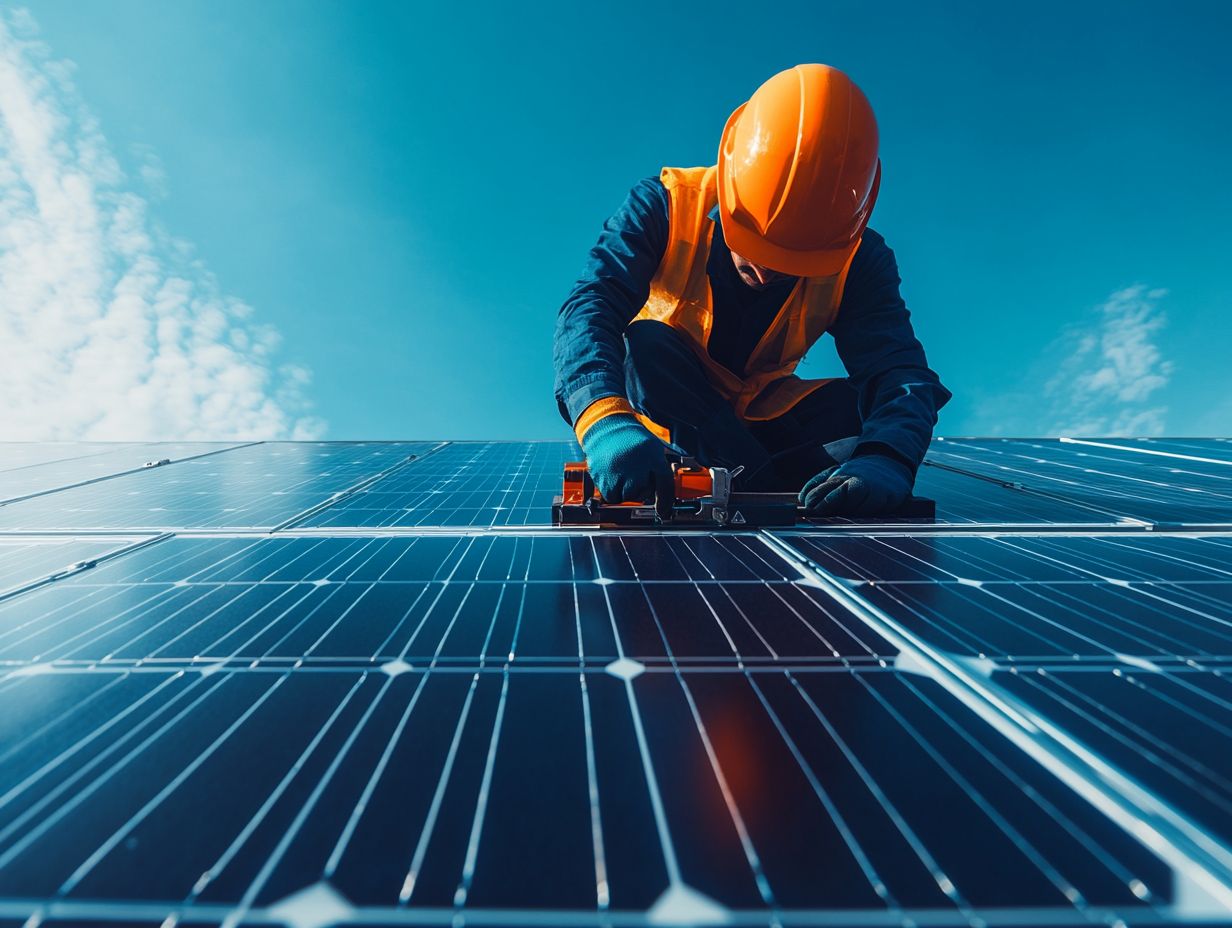
Solar panels use silicon cells to convert sunlight into electricity through the photovoltaic effect. The cells are connected in series and placed on a solar module to form a solar panel. When the sun’s rays hit the cells, electrons are released, creating a flow of electricity.
What are the components of a solar panel system?
A complete solar panel system consists of solar panels, solar inverters, mounting equipment, battery systems for solar energy storage, and electrical wiring. The panels absorb sunlight and generate electricity, the inverter converts that electricity from DC to AC, and the mounting equipment secures the panels in place. Additionally, grid-tied systems allow for electric grid integration and net metering.
How does solar panel equipment benefit the environment?
Solar panel equipment harnesses the sun’s energy, a renewable and clean energy source, to produce electricity. This reduces the reliance on fossil fuels, which release harmful gases and increase environmental impact.
Additionally, solar panels do not produce any emissions or waste during operation, contributing to sustainability and energy independence.
What is the lifespan of solar panel equipment?
Typically, solar panels have an average lifespan of approximately 25 years, and with proper solar maintenance and care, they can last up to 30 years or more. Inverters typically last for about 10 years, while batteries in energy storage solutions may need to be replaced every 5-10 years, depending on usage.
How does understanding solar panel equipment help in making an informed decision?
Understanding the technology behind solar panel equipment, including solar energy conversion and performance optimization, can help you determine the best system for your needs.
For example, knowing the wattage and photovoltaic module efficiency of different panels can help you calculate how many panels are needed to meet your energy needs, and understanding the different types of inverters, including microinverters and power optimizers, can help you choose the most suitable one for your system.
What are the different types of solar panel technology?
The most commonly used solar panel technologies are monocrystalline panels, polycrystalline panels, and thin-film solar. Monocrystalline panels are made from a single silicon crystal and are the most efficient, offering high solar capacity and performance ratio.
Polycrystalline panels are made from multiple crystals and are less expensive. Thin-film panels are made from a thin layer of silicon and are the least expensive, but also the least efficient, affecting the overall energy output.


